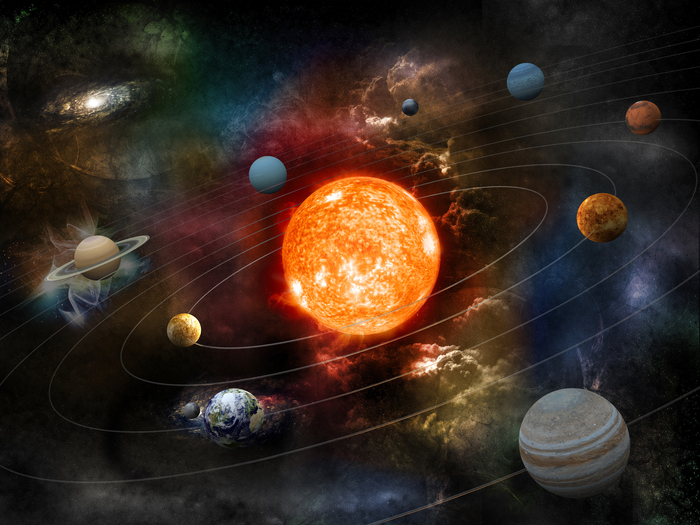The giant planets of the Solar System (Jupiter, Saturn, Uranus and Neptune) migrated into their current orbits between 60 and 100 million years after the birth of our planetary system, in the same period in which the Moon was formed: this is demonstrated by chemical composition of rare meteorites that derive from the ancient Athor asteroid family. The results of the study are published in the journal Science by an international research group coordinated by the Italian astronomer Alessandro Morbidelli who works at the Côte d'Azur Observatory in Nice.
The giant planets formed closer to the Sun than they are now and migrated to their current configuration during a period of orbital instability. Previous studies have suggested that this period would have occurred within the first 100 million years of the Solar System at most. To better define the timing of the migration, the researchers examined the Athor family of asteroids, generated about 3 billion years ago by the breakup of an ancient parent asteroid. Their chemical composition, studied thanks to telescopes, was found to be in line with that of rare meteorites found on Earth, the so-called E-type chondrites. This correspondence suggested that through the analysis of the isotopes present in meteorites it would be possible to reconstruct the history of the parent asteroid.
Researchers at the University of Heidelberg had already established in 2022 that Athor's progenitor had crystallized 2 million years after the formation of the Sun and had remained undisturbed for at least 60 million years, when the turbulences that led to violent collisions, fractures and orbital shifts. This 60 million year limit caught the attention of Morbidelli, who twenty years ago had already worked on some models of the migration of giant planets. “Most likely, the giant planets became unstable at that time,” says the astronomer. And in fact, when Morbidelli and his collaborators developed five different models for the evolution of the Solar System in the new study, "the numbers matched almost miraculously."
The results seem in line with other previous studies, but they are not yet sufficient to consider the question closed: another research from Johns Hopkins University, shared on arXiv and peer-reviewed by the journal Nature Astronomy, suggests that orbital instability could be began even earlier, just 11 million years after the formation of the Solar System.

